The Cost of Living on a Boat for our Family of Five

So, how much does it cost to live on a boat? I will walk you through everything you must consider. This post will help you figure out if such a lifestyle makes financial sense, for your family.
Since we moved aboard as a family of five, I am focusing on family expenses. If you plan to be living aboard alone, or as a couple, you can change some of the expenses.
Wondering if you can actually live on a boat, read my post: Can you Live on a Boat? Yes, and Now is the Right Time.
It is not that hard to calculate the approximate monthly cost of living on a boat, for a family, once you know what kinds of expenses to anticipate.
For us it was around $4000 in the US, and $2500 internationally. I will walk you through everything you must consider.
I have also added quite a lot of tips about saving money, which worked like a charm for us, and should work for you too!
Our Monthly Cost in the US.
The single, most-important factor, regarding how much you spend, while living on a boat, is the monthly income coming in.
It will define everything – from the type of boat, through choices of marinas (including none), to eating out.
You will like my popular post on the eternal dilemma: Catamaran vs Monohull: Let’s Solve This Thing!
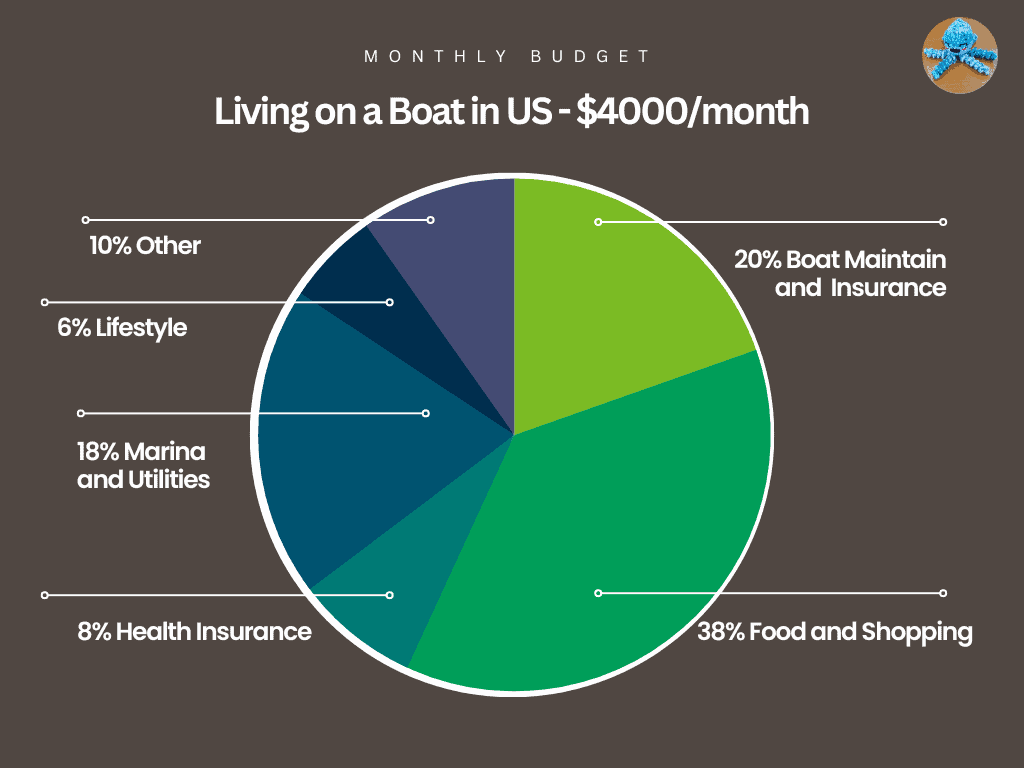
Here is our monthly budget with one reliable and consistent monthly income. I started world-schooling when we moved aboard, but my husband still had a full-time career.
All of our kids posts: Traveling with Kids and Teens.
I have to add, while cruising in the US, we spent more than $4000/month, but the money for the boat and all of its refits, repairs and upgrades, came out of our savings, specially dedicated to following our cruising dream.
Our Monthly Cost Internationally.
Once we both were willfully unemployed, we only had our rental townhome in the US, as a consistent monthly income (around $1300 after fees, insurance and taxes).
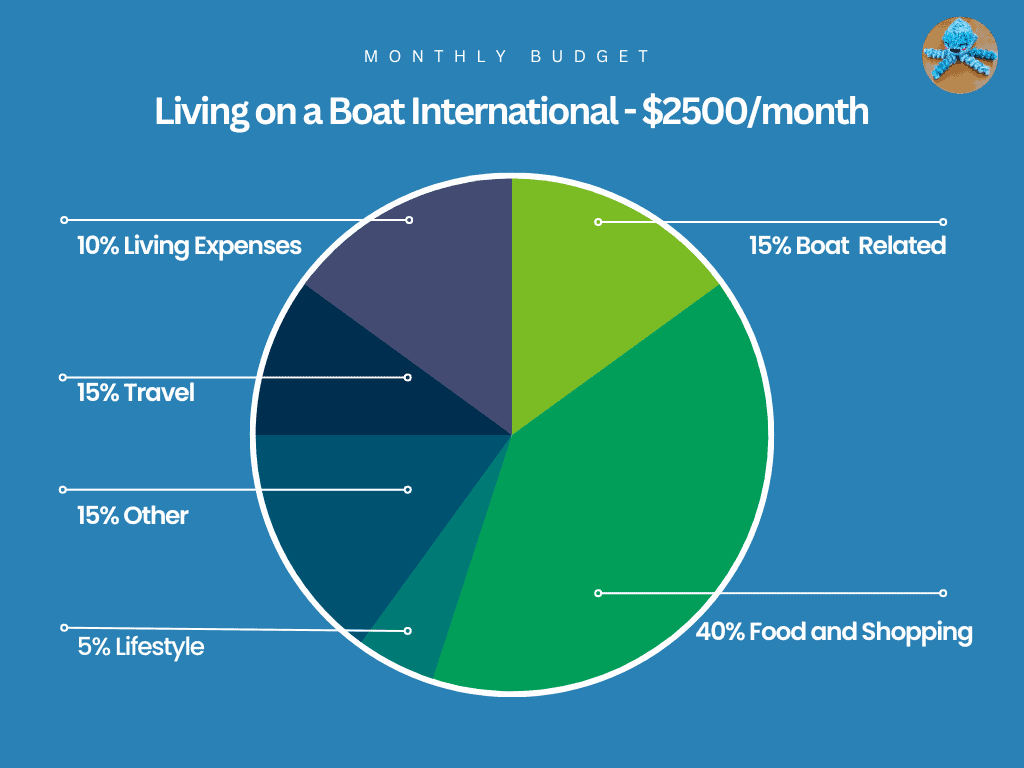
We did not want to wing it.
While still in the US, we planned and eliminated a debt of over $350,000. Wondering how? Read my post with all the details:
How we Defeated Debt to Travel the World
We dropped both boat and health insurances once we left the Bahamas (State Farm includes all of Bahamas).
Since we did have some insured assets back in the US, we were able to keep the so called “Umbrella” insurance coverage, which only provided liability coverage as we cruised.
There are many “other” expenses, which will define your budget – storage units, mailboxes, donations, flights and so on.
These are too specific for everyone and can change from month to month.
The charts are a bit simplified, but the distribution of funds does reflect our spendings.
Some months, especially internationally, when we spent less than $1000. But then we would buy 5 flight tickets to visit family and our monthly spending would be over $5000!
Boat-related expenses
I am dividing the expenses in a way that makes the most sense, since the boat is a universe of her own. And, yeah, BOAT does stand for Bring Out Another Thousand.
For a tour of our boats:
1995 Privilege 42 Boat Tour.
The Boat Tour – Our 1985 Grand Soleil 39.
Boat price
You can have a monthly mortgage on your boat. This was the case for most of our friends, who only wanted a boating sabbatical for a year or two.
If you spend your savings to buy a boat with cash, your monthly spending budget will be smaller. The better scenario for those of us who had no planned end-date.
There is a big difference in the market for catamarans and monohulls. Just as the two boats are very different.
Popular Boating Guides:
Catamaran vs Monohull: Let’s Solve This Thing!
11 Valuable Boating Subscriptions and Courses
How to Sell a Boat by Owner, the Honest Way
Boat Parts
I’ll take two of everything, please!
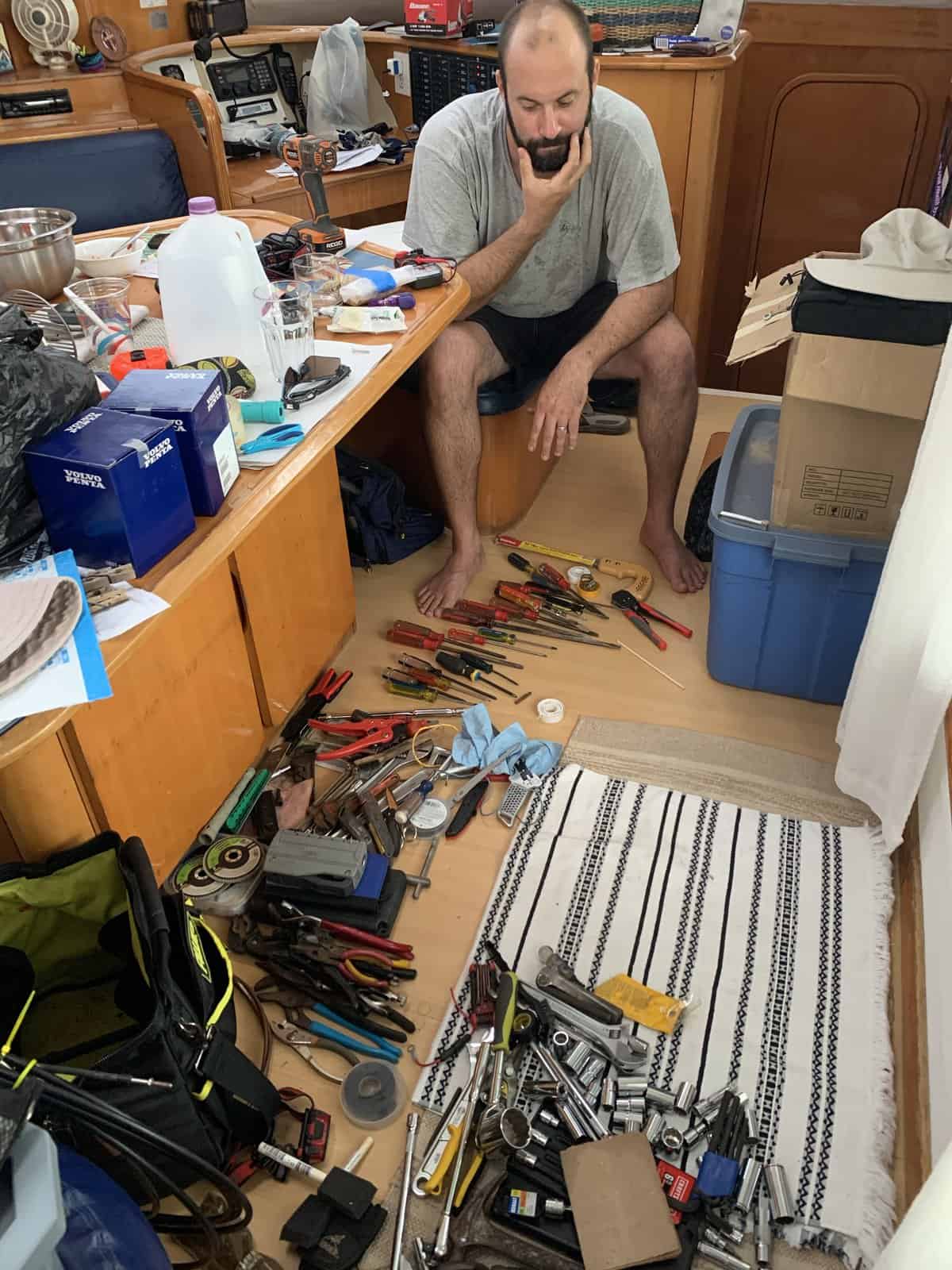
Some coastal towns have shops for used boat gear and gadgets, which will save you lots of money. We found the best selection to be in Florida, with St. Augustine having one of our favorites.
Tip: Check RV stores, lots of items related to life on the move can be used in boats. But keep the stainless-steel marine-grade!
Boat Maintenance
(comes as a bonus, with every boat purchase)
The rule of thumb, at least for planning purposes, is to budget around 10% of the boat value as your annual maintenance expenses.
All of the repairs and upgrades are significantly cheaper, if you learn to do them yourself.
YouTube, manuals and other blogs and forums can be a wonderful resource, if you like to consult them (our captain does not…).
Consider haul out and bottom painting every two years, rigging inspection depends on the amount of sailing, as well as the country requirements.
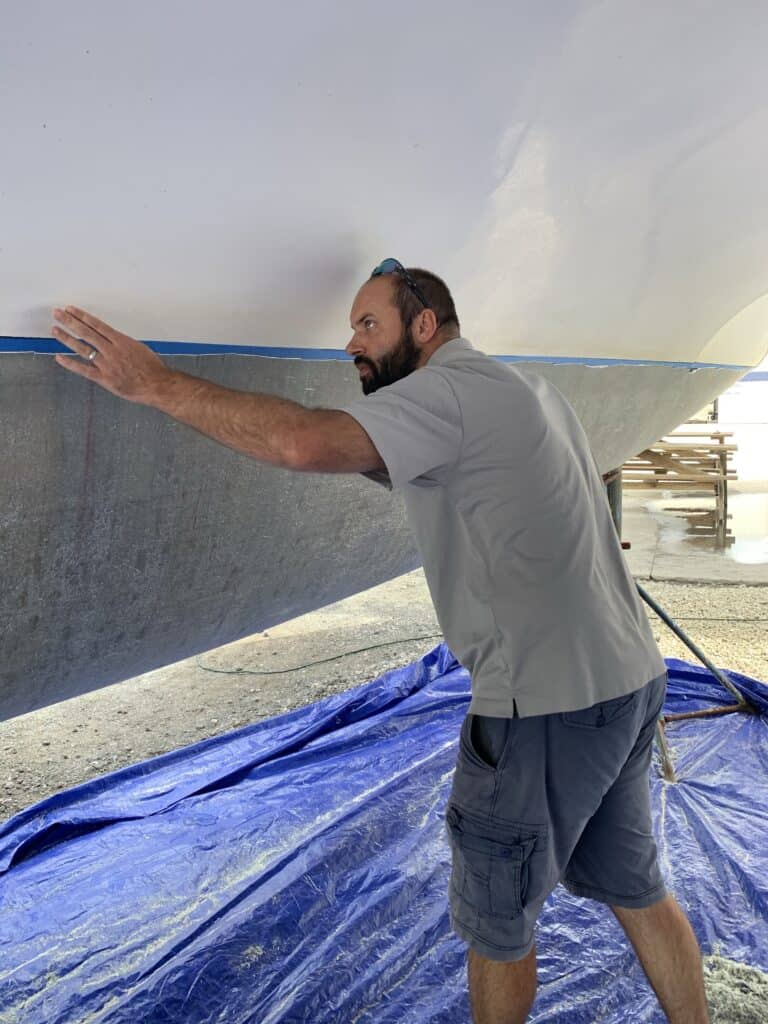
Tip: Most boatyards in the US will not allow certain boat repairs to be performed by the owner. Ask for a list, before you haul out. Yes, even DIY boatyards.
Better tip: Find a handy husband first, and then go sailing and living on boats.
Don’t forget the dinghy.
Another addition to your monthly boating budget if the family car (aka the dinghy).
Unless you plan to be at marinas the entire time, you must have a reliable transport from the boat to land and back.
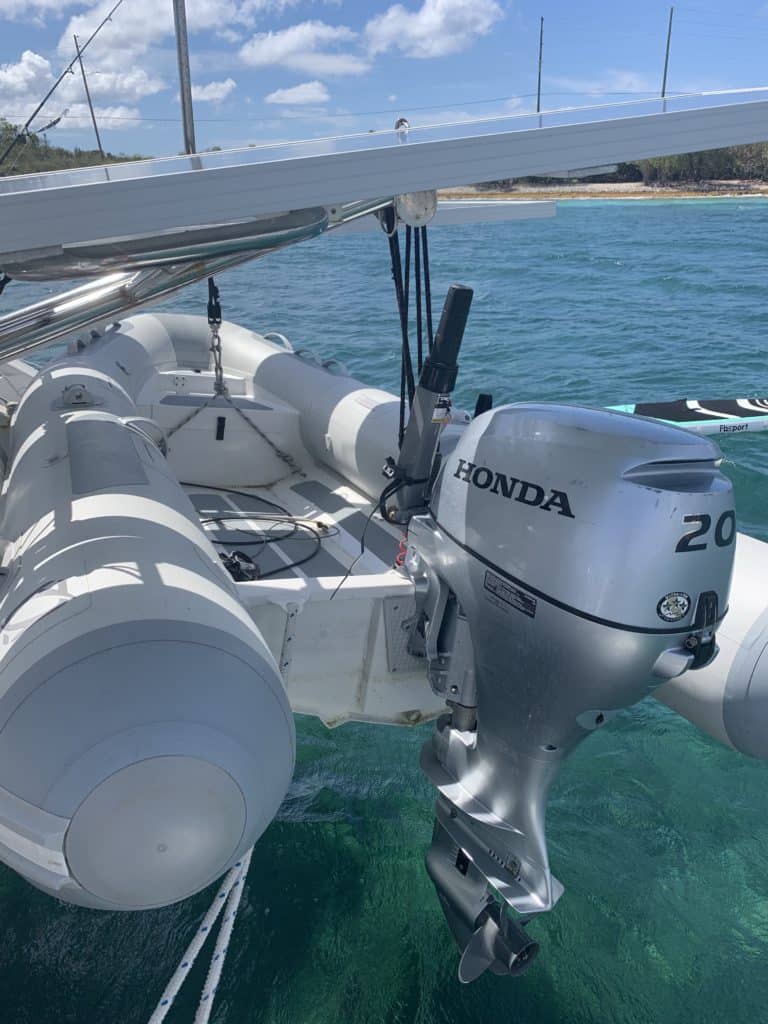
The most consistent expense regarding the dinghy, is the gas usage. Dinghies are best used with ethanol-free gas, to prevent clogs. Clogs must be cleaned. Who has that time for that, in a tropical paradise!
All of our boat gear posts: Boat Gear @ No Texting and Tacking.
Tip: Once you find a good spot, in a popular anchorage, it will be taken as soon as you decide to go sailing for the day. So, we often use the dinghy for close-by beach explorations.
Insurance, Taxes and Fees – our Favorite!
No matter where you cruise and live aboard, there will be certain state and country-specific fees you will have to pay.
Popular Boating Lifestyle Posts:
Can you Live on a Boat? Yes, and Now is the Right Time
This Sustainable Lifestyle is the Fairest of Them All. 10 Reasons Why Living on a Sailboat Matters.
Why We Never Missed Space, While Living on a Sailboat
It is not always easy to budget for them, because destination plans change.
Boat Insurance
The insurance premium will depend greatly on the amount you want insured and should be somewhere between 2-5 % of the insured value of the boat.
If you plan to be at US marinas, you will need at least $300 000 liability coverage. Most plans will offer that. Mooring balls also require insurance.
Tip: Try to insure your boat via an office, which is not in the busiest boating areas. You may be offered a lower premium, like we were!
Every foreign country also offers local insurance. Often, these plans are more affordable, than trying to find global coverage via one single provider.
Sure, it’s a hassle and takes time. Saving money usually does.
Taxes and Fees
Even though these are normally paid on a yearly basis, they will alter your monthly budget.
Personal property taxes vary not just by state, but by a county as well. It is not just the number of months spent in one place.
Some counties have a rule of the boat being in the county during a specific month (usually January), regardless of how long you stay there.
State and Coast Guard registrations will have to be renewed annually (or every two years).
Tip: Call and ask about the tax laws at marinas. The office staff are usually quite familiar with the laws. Ultimately, it is your responsibility to double check, of course.
Dwelling Expenses.
Unlike insurance premiums, the monthly cost of living on a boat for a family depends on the number of people aboard, if you plan to be at a marina.
Cost of living at marinas.
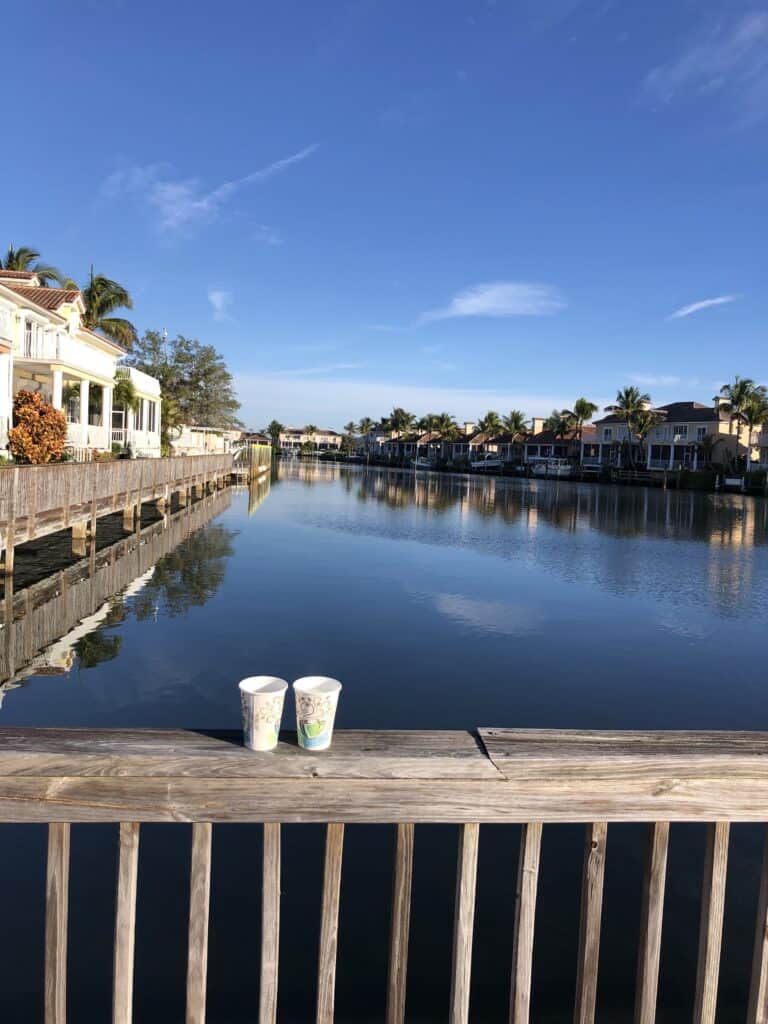
In the US, there are quite a few marinas you can call home, and some are more welcoming than others.
The further south you travel, the more expensive those slips become, the longer the waitlist and the happier the happy hour!
Liveaboard marinas, which advertise as such, charge a liveaboard fee, and it is often multiplied by the number of people aboard.
Some have optional amenities you can add as well – pools, clubs, etc. Like an HOA.
The price per month is just one thing to consider, while sailing as a family.
When we sailed in the US and Joe was still working, we stayed only at marinas and mooring fields. We changed quite a few. It is a bit more expensive, but staying stuck sounds too much like suburbia.
Oh, speaking of suburbia here is a nice post: I Don’t Think I can Live Without… Think Again. How to Remove Suburbia Stuff and Travel.
Access to the beach, a loaner car, or a grocery store within bikeable distance, as well as how popular the marina is with liveaboard families, are major factors that can make or break your boating experience.
The best part, however, is that you can always change the neighborhood!
Tip: Liveaboard fees and utilities are usually listed on the marina website. Calling is the easiest way to find out.
Cost of living on a mooring ball.
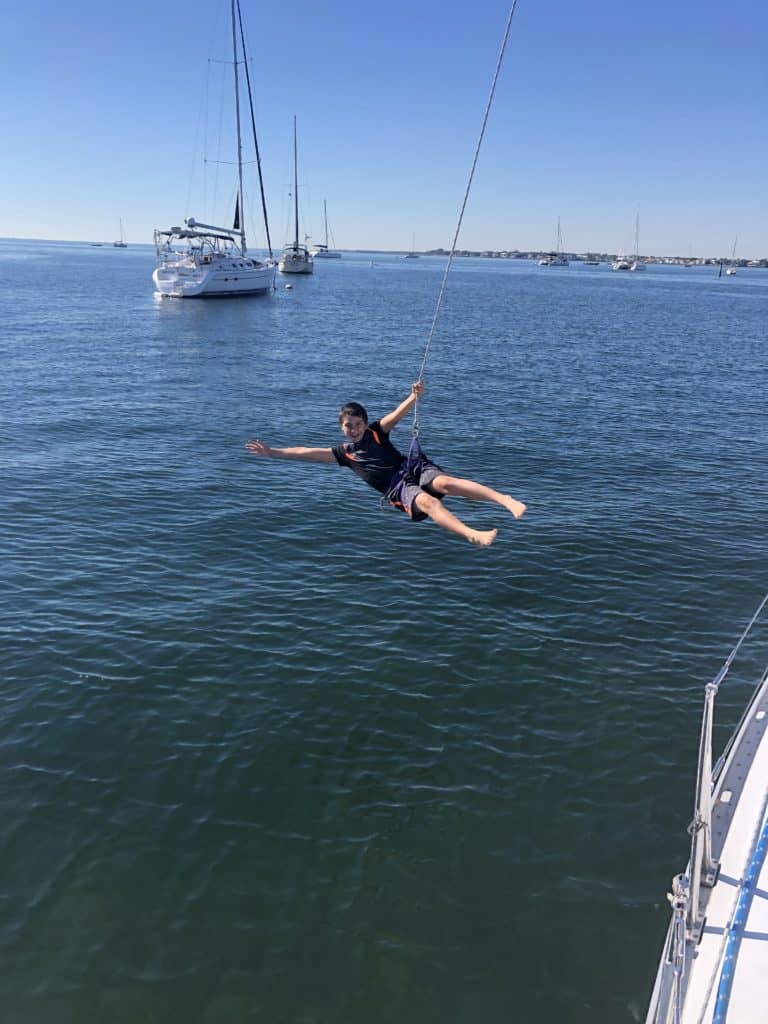
Staying attached to a mooring ball, is a great option, and definitely more affordable than living at a marina. It can also be a great trial of living off the grid.
While at a mooring ball, you can use the amenities at the marina (such as showers, pool, laundromat, captain’s lounge, wifi, etc.).
In Miami, their current rate for a mooring ball per month (as of February 2024) is $376. They quote the maximum length as 40 feet, but, hm, do ask. We stayed there, as did our friends, and we were all over 40 feet.
Tip: Many mooring fields are on a “first come – first serve” basis. There are more spots after a great sailing window, because transient boaters use that time to change locations.
Free living at anchor.
Living at anchor in the US free. There is nothing that can beat that, in terms of your monthly savings. And it more than makes up for the lack of space aboard:
You will like this popular post: Why We Never Missed Space, While Living on a Sailboat.
The Chesapeake Bay offers a myriad of beautiful little inlets, where you can easily drop the anchor and wait out weather, or spend some time in beautiful Annapolis!
Annapolis and Maimi also have the excellent boat shows, where we purchased lots of boating gear at a discount.
We loved short weekend trips, and had quite a few friends visit us aboard. Even if living at a marina, take trips away from the slip.
It was the only sailing I enjoyed – the short kind: That Wind in the Sails is Not Whispering to me. How to Live on a Boat (if Sailing is not Your Thing).
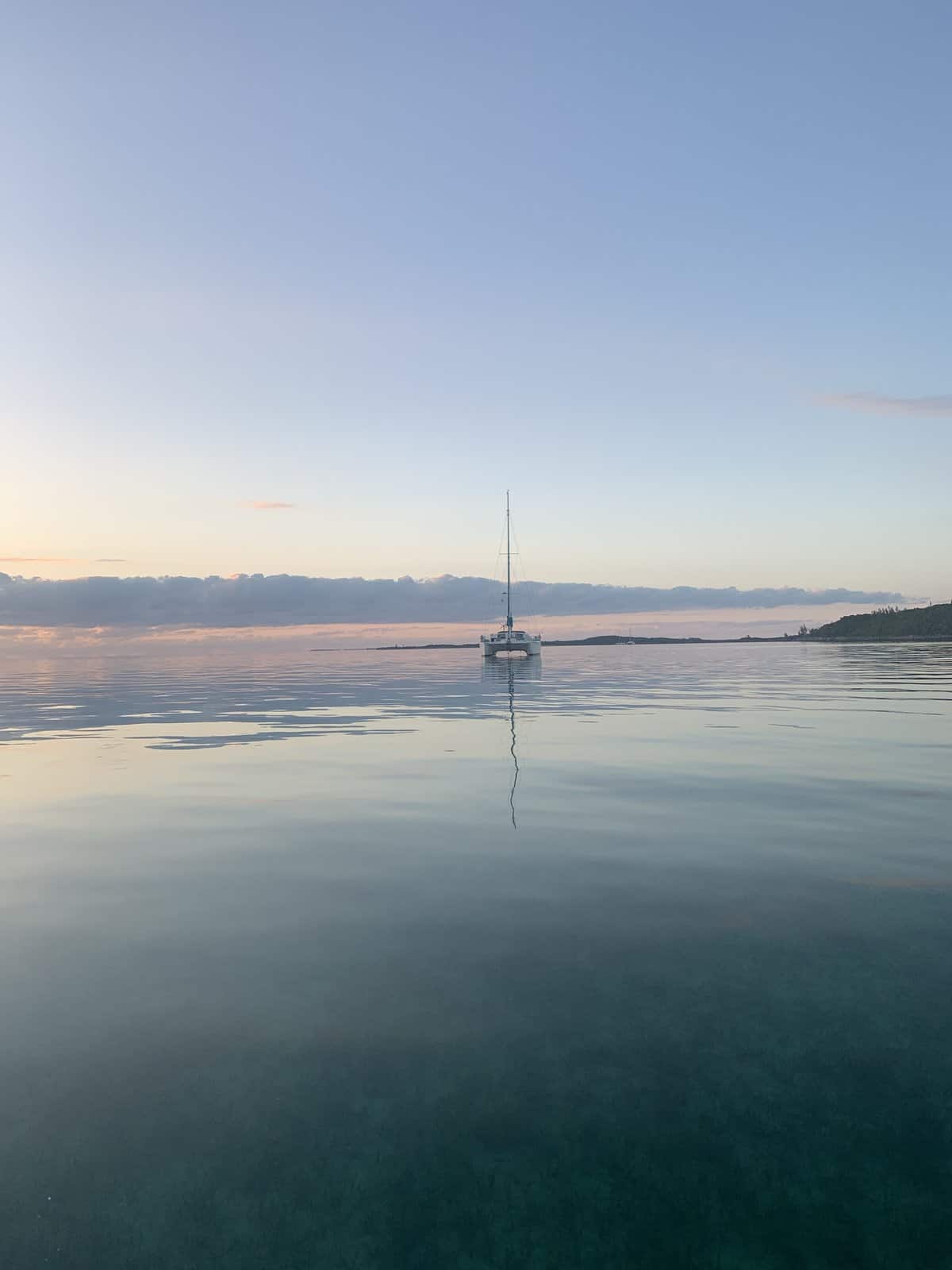
Living on anchor, internationally, is also free. Since most families with kids opt for this living arrangement, some popular anchorages fill up quickly, during the cruising season.
Thankfully, there are plenty of beautiful spots for everyone to find what they truly love!
We liked tiny, secluded islands and quiet anchorages. We also enjoyed busier towns, especially when we had to provision, or rent a car for in-land travel.
Tip: Popular anchorages have large cruising communities and activities, especially in hurricane holes (places to spend hurricane season). One of our favorite was Luperon, DR.
Cost of Cruising to Different Countries.
Cruising expenses, in this case, means entry fees and visas for different countries.
Check the official websites for the destination you plan to visit next and find out all of their fees and regulations.
To help you with the Bahamas: Sailing from Miami to the Bahamas: What You Need to Know.
If you sail as a group, someone might already have done the research. It is just one of the many benefits of sailing with friends (aka buddy boating).
Tip: Marina staff are familiar with the immigration rules and fees of the country. The larger the marina, the easier to find your answer (in English). They do not need to know that you’re not staying there.
Boating Toys and Gear you will Need.
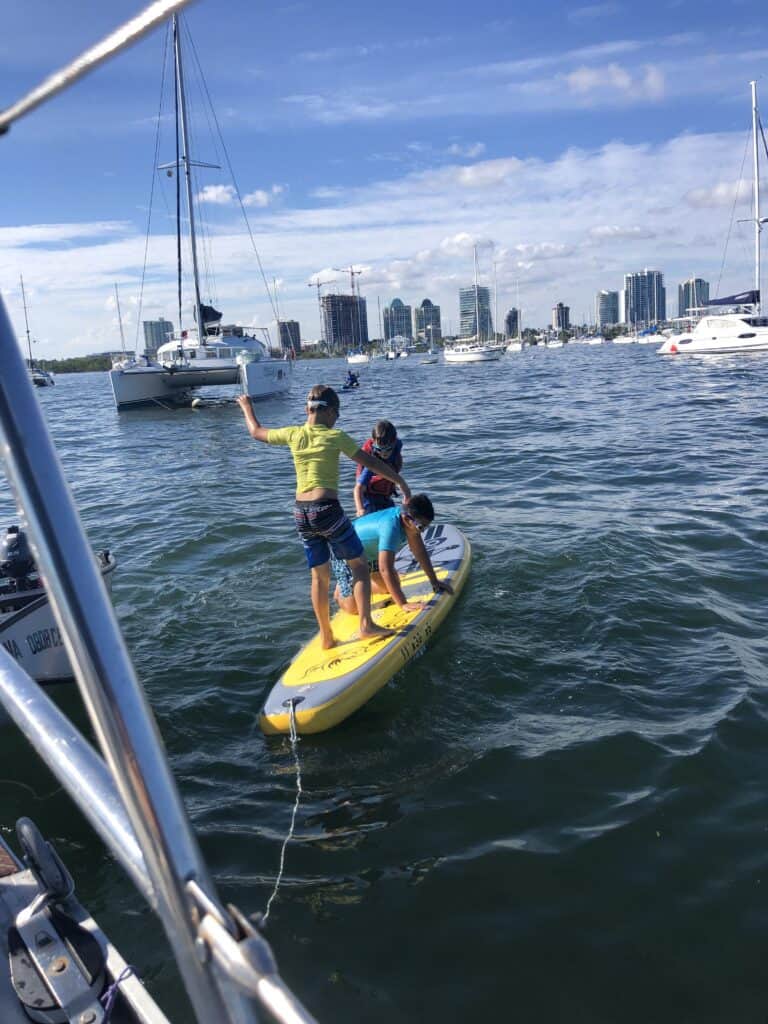
Luckily, these are all one-time purchases. Some cost a lot, but are not part of the monthly expenses. The cost of boat life does increase, if you need a larger life raft, five, six or more offshore grade life vests, harnesses, and so on.
All of our boat gear posts: Boat Gear @ No Texting and Tacking.
When buying a boat, such gear might be included. Ask and insist on it. It might not sound like a lot, compared to the boat price, but the costs to buy everything yourself add up quickly!
Remember to consider other toys for the boating adventure – scuba gear, wakeboarding, kitesurfing and so on.
Tip: Just like boat parts – find all the toys, while in the US, or even cheaper – used, on Facebook.
Monthly Subscriptions.
Many of the monthly expenses will change based on where you cruise.
Our Favorite Boating Resources:
BoatUS – Piece of mind, if towing is needed. We were always members.
Predict Wind – We always used it to check the weather.
West Marine – We were members, earned points and enjoyed discounts.
Booking.com – For stays when traveling away from the boat.
I post about a few valuable boating subscriptions you might want to consider (once you ditch he land ones): 11 Valuable Boating Subscriptions and Courses
Amazon Prime
Packages can be delivered at any marina down the road, just let them know you will sailing by to pick it up.
We loved and hated Amazon, because it was easy to overspend. We dropped that membership as soon as we exited the US.
For other things we removed: I Don’t Think I can Live Without… Think Again. How to Remove Suburbia Stuff and Travel.
West Marine Membership Rewards
While ordering things online is convenient, more times than I can count, we opted for the closest West Marine and just purchased whatever we needed.
For clothing, shoes and life jackets – I prefer to try them on.
Popular Everyday Gear:
19 Best Boating Bags. Tips How to Use Them.
9 Sailing Outfits for any Season and Reason
Comfortable Sailing Shoes for Every Boating Need
And if I order online, I can easily drive 10min and exchange, or return.
Netflix, Apple, Hulu, etc.
We had a Netflix subscription while in the US.
We cancelled all streaming services and swapped videos and DVD’s with other boaters – everyone has tons of videos aboard.
And older classics are much better than many of the current choices on these platforms.
Boat US
That subscription was very handy, especially with occasional ICW runs. Those guys are busy, there are always boats in need of towing, for various reasons.
They even saved our dinghy once, when we lost it in Biscayne Bay, Florida, right after we arrived in Miami. At night!
I have a funny story about it: We did not Need BoatU.S. Until we did.
Cell phone plans
All personal cell phones were eliminated once we left the US (including the kids’ – just take them away, nothing to be afraid of!).
We kept one phone, which turned into the home-phone, and we switched to Google Fi and their $60/month plan.
We had no problem using Google Fi everywhere there was a cell tower, and continued to use it while traveling in Europe and Asia – super convenient.
Garmin inReach Mini
We loved our little satellite tracker. We generally like gadgets of all kinds.
We used one of their monthly plans, for around $40/month, with a maximum of 10 text messages per month (for weather updates during longer offshore passages).
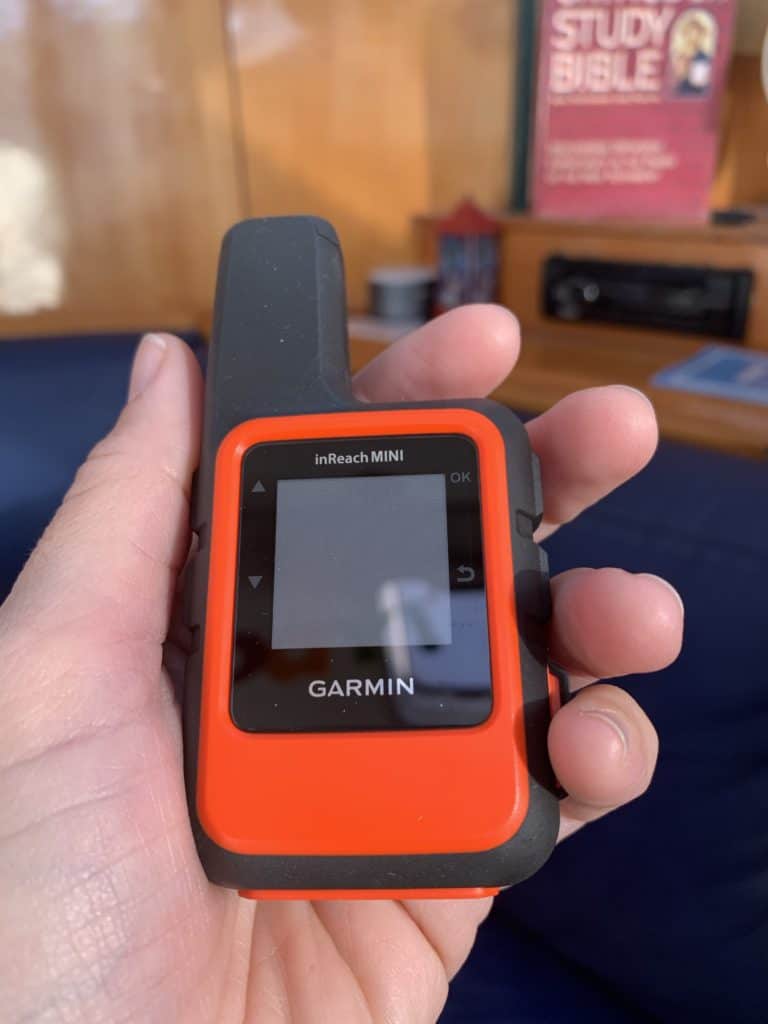
Internet
We did not work, so we could not justify spending money on internet cards abroad, just for fun.
Instead, sailing the USVI, we purchased coffee at a nice shop with shade around. The shade is very important!
Once we had the Wifi password, we would occasionally visit to use it (visit the shade, I mean).
Tip: Finding Free Wifi is impossible in the less developed and more “touristy” islands. To use WiFi, you will have to sit down in a coffee shop, or a restaurant.
Utilities Aboard
Just because you move to live on a boat, does not automatically mean all utility bills are reduced, or gone.
The beauty of liveaboard lifestyle is that self-sufficiency really is possible and not difficult.
Electricity at a marina.
While at marinas, electricity will most likely be a flat fee, depending on the type of outlet you use.
One of the marinas, in Florida, where we stayed for a bit, while working on our catamaran, charges (as of February 2024) $72 per month for liveaboards for 30Amp and $160 per month for their 50Amp outlet.
Electricity from wind and solar – free.
Living on a mooring ball, or at anchor means your power will either come from the sun, the wind, or from a generator. Or some combination of the above.
Our wind generator was wired to dump the extra power into heating our hot water tank. Now, we rarely took showers with hot water, but it was nice to have it available.
Tip: Solar panels are always the best solution, as well as the most sustainable, while living at anchor.
Portable solar chargers – so handy!
I purchased small, folding solar panels on Amazon.
We used the panels all the time to charge all smaller electronics (anything that can be charged with a USB cable, such as Kindles, tablets, gamer, cell phone, etc.)
Tip: These make an excellent gift for any boater.
For more gift ideas: 51 Classic Gifts for Boaters. Ultimate Guide.
Burning diesel dinosaurs
Some boaters use a generator. We decided not to install one, and we never actually needed it.
The places we cruised had plenty of sunshine. We ran the actual boat engines once, for a few hours, during an unusually long stretch of cloudy days.
So, as far as electricity goes – our cost of living on a boat with a family of five, including three teens and their laptops, was $0!
Marina water
Unlike electricity, marina water is very affordable, and easy to get. Marina water is generally fine to drink too, but do ask and follow the recommendation of the marina staff.
We did not like the water in Florida, but still drank it. Publix and Walmart (probably other places too) have those stations to refill water for a few cents. We used them as well.
Watermaker water
It is almost impossible to cruise to remote places and not have a water maker aboard.
We met a family, who cruised the Bahamas this way, for a month, and they were very, very, very careful with their water usage. It is doable, but not fun.
We had a water-maker and once everyone got over the “I am drinking ocean water!?” factor, we loved our water aboard.
It tasted great and we had enough of it to even do laundry aboard, and take quick showers, as needed.
Pump-out and composting
We are not experts on this, because we only had composting toilets aboard. They took a bit of getting used to, but worked quite well.
Here is a post about them: My Composting Toilet Aboard – Love-Hate Relationship (Pros and Cons).
They made excellent motivation for the kids to complete school-work and chores! No one liked cleaning the composting toilet.
Based on reports by other boaters, it is somewhere between $10 and $50, to pump out, depending on the frequency, the boat, the location, discounts and so on.
Trash removal
Most marinas do have dumpsters and do not charge additional fee for trash removal.
Every marina along the ICW, that we have visited, has been very clean, in terms of dealing with trash collection.
To dispose of a bag of trash in the Bahamas costs anywhere between $4 and $9 per bag!
Tip: Two bags worth of trash can fit into one. Lots of us do it that way. I would not be surprised, if they start charging by weight one of these days.
Lifestyle Expenses
The variety of lifestyles and budgets within the same anchorage is astonishing.
With or without hired crew, expensive wine and fancy gadgets, the sunset is the same for everyone. And there is plenty of ocean too!
Eating out
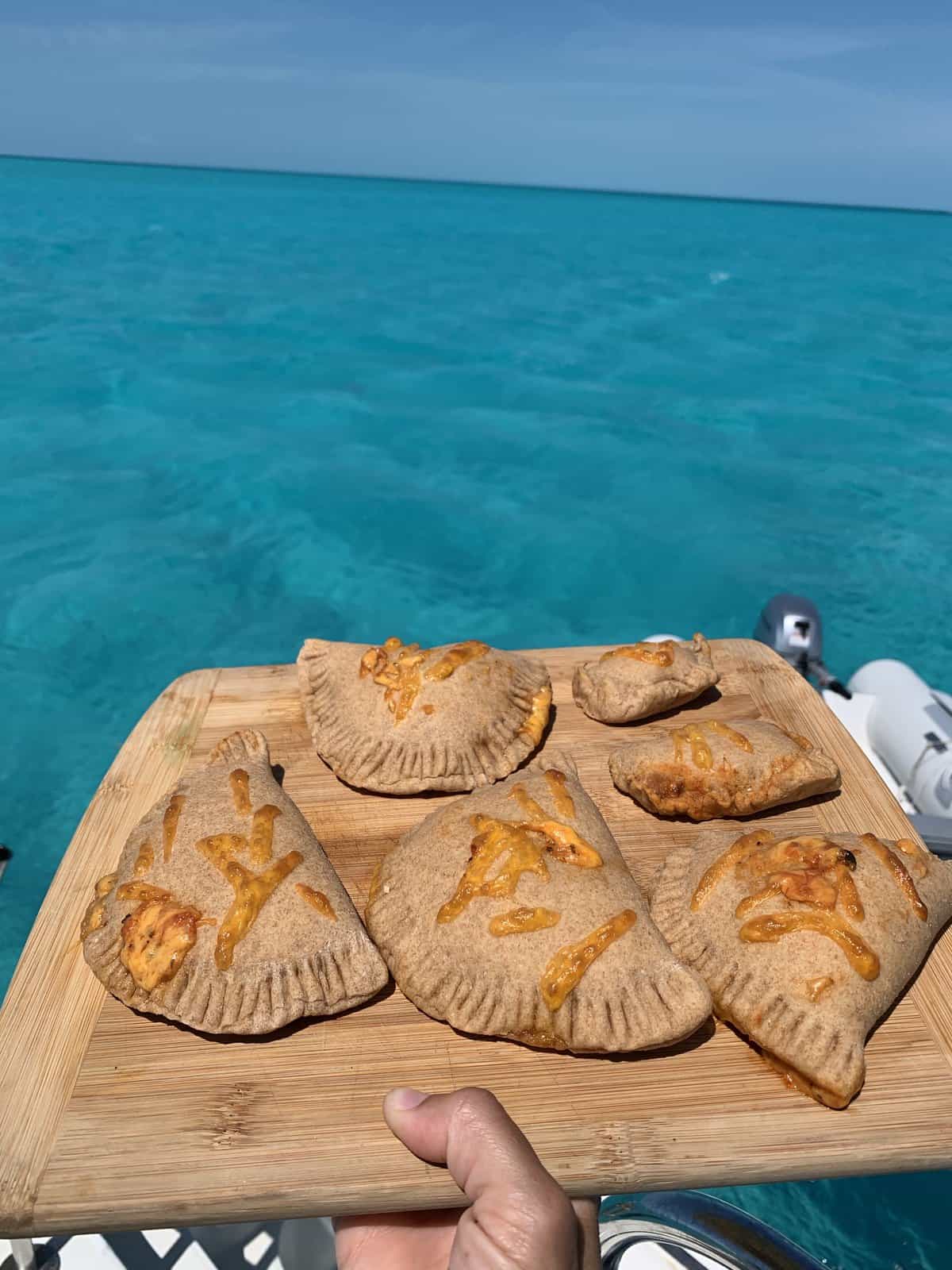
It is difficult to write a post about the sample budget for eating out. For those used to visiting nice local restaurants, eating out can easily become a mission, while sailing and traveling.
If we worked, while living aboard, we’d totally support small local businesses as well.
Eating out expenses vary greatly. It costs a lot more in smaller island territories, busy with tourists.
We did not eat once in the Bahamas, and ate out frequently in the Dominican Republic.
In the free PDF table at the end of the post – fill in your typical monthly expense in your current land-living country and chances are, it will be similar on a boat.
Amusement parks
Another tricky thing to budget. There are a few places in every island that offer some pretty spectacular water parks, sky-diving, scuba-diving, zip lines and so on.
For us, snorkeling, spear fishing, swimming, hiking and exploring, wakeboarding and just getting together with other kids to do flips off the bow, offers plenty of fun in the sun.
Want something more thrilling – diving off of rocks, bridges, spotting a shark near-by, or playing catapult are hard to beat!
These are all widely available and free!
Shopping
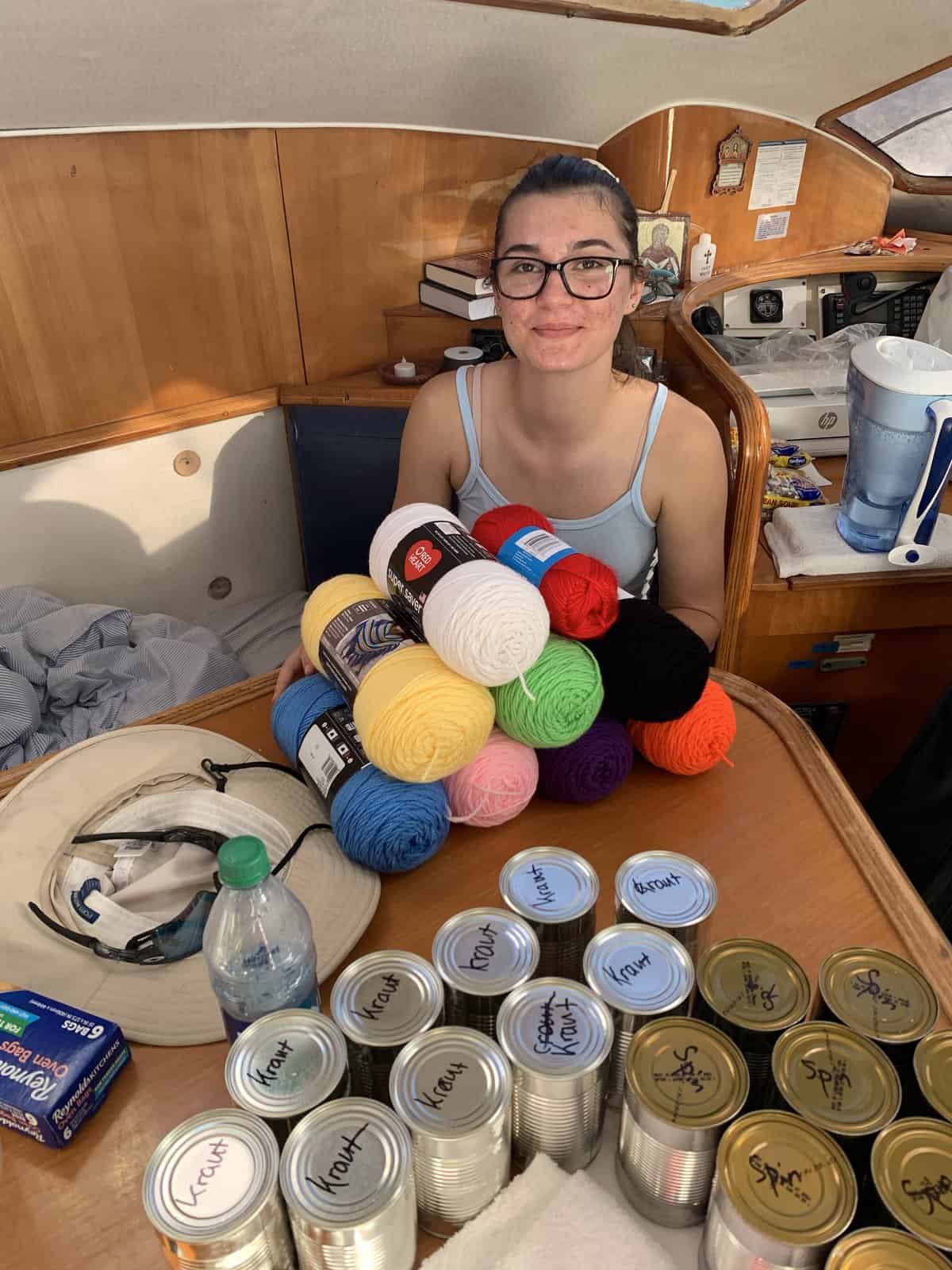
If were out for a vacation, I would definitely buy a souvenir, or a pair of new flip-flops, or a cute necklace.
Shopping for cute items was relatively low on our list. There was almost no space aboard for souvenirs either.
Once we sold the boat, we started flying and traveling carry-on only, so still no space for shopping trips.
We dis spend money on boating gear, which can be expensive, but quality matters:
All of our boat gear posts: Boat Gear @ No Texting and Tacking.
Healthcare costs for a family
Healthcare costs in the US are very high, while other countries offer great medical care at a fraction of the cost.
But you will not find the same facilities and resources within an arm’s reach.
Prepare before you sail away:
Popular Health and Safety Posts:
Worried About Sharks in the Bahamas? 10 Tips for a Safe Swim.
10 Seasickness Questions – Answered (by a Boat-mom).
Seasickness Sucks – 21 Tried and Tested Tips to Stop it.
International Health Insurance
A few companies sell international health insurance coverage – a much broader inclusion of services, compared to emergency services.
It is something I always find a bit funny, because the country I worry the most, regarding healthcare cost is the US.
International Health Share Groups
We have a healthcare share plan in the US, and it cost us $300 per month, for the entire family, with world-wide coverage.
Yet, again, the deductible itself would be more than a doctor’s visit, plus all the required tests, plus all the required medications in any of the countries we visited.
Travel Insurance
When traveling on land, we do carry travel insurance.
Safety Wing offer great plans and is run by nomads, who know best what travelers need.
Med-evac and catastrophic insurance
The price is determined by the number of people insured and the duration of the trip.
For our family of five, for three months in Asia, I was able to buy insurance for around $450 through IMG (I found out about Safety Wing afterwards).
US only insurance
We are able to search for some plans, which only cover the US, and do take into account our American citizenship. Cigna has such plans available.
For non-US residents, I think Safety Wing offers US coverage, check out their rates.
I have found those to be cheaper, than adding the US as a country to visit, on a global insurance policy.
When we stay in the US for longer, we switch back to our share plan.
No health insurance
This is what we did, while sailing outside of the US.
Ironically, the only place we actually needed a bit more urgent healthcare visit, was St. Thomas, US Virgin Islands, where the prices were just like in the good old DC metro area.
For an ear exam and antibiotic drops, we paid almost $300.
Other Monthly Boating Expenses
Did you think that was all?
There are always smaller and larger expenses, repairs, unexpected and unbudgeted costs. Set away some funds aside. Here are a few examples:
Winterizing
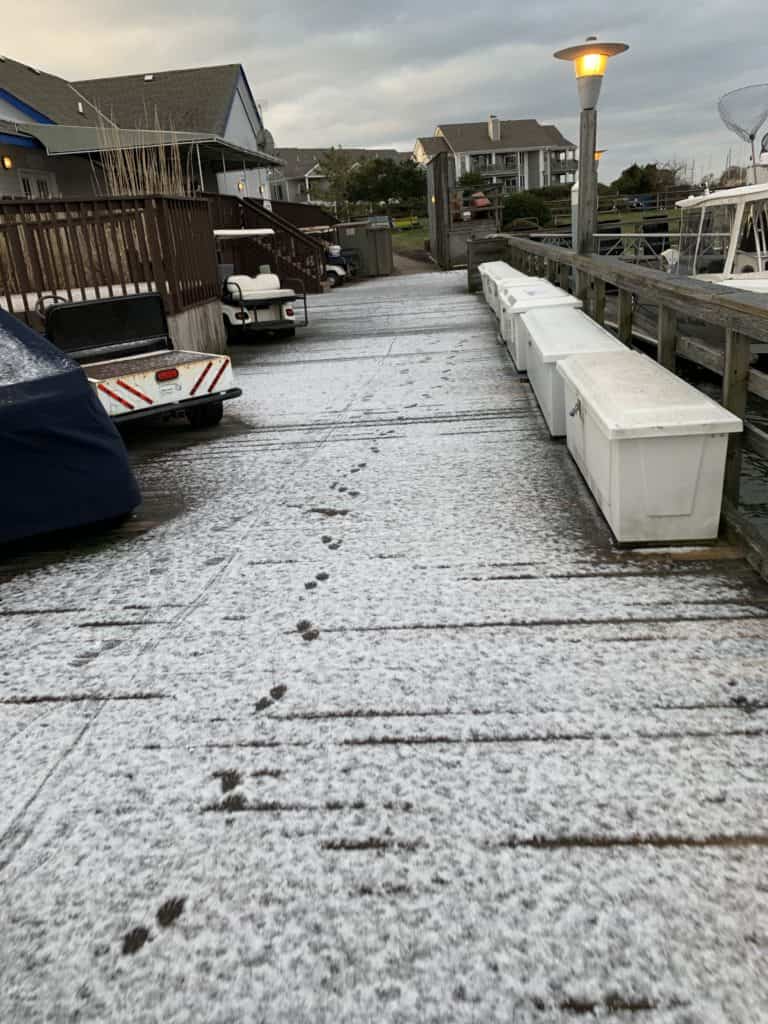
If you must leave your boat for the winter, you may have winterizing expenses, including haul out.
Many boats wrap themselves during the winter, which does turn the ship into a green house, but the mold and lack of ventilation are still issues to face continuously.
Anyway, if you are so unlucky as to be wintering in the north, keep such expenses in mind.
Storing the boat
Storing the boat, for a longer period of time, often includes a haul-out.
If you decide to leave it in the water, the slip fees will be lower, as long as you are not living aboard.
At the marinas we did visit, that meant being off the boat for at least 15 days, or more, out of every month.
Guarding the boat
If you leave your boat anchored, or attached to a mooring ball, you can find people to watch it for you.
They typically climb aboard 1-2 times per week, ventilate, check for leaks, run the engine, if needed, take tons of photos for you and report via WhatsApp, Viber, or however you agree.
While we left the boat in Luperon, Dominican Republic, it cost us $30/week for a highly recommended boat-sitter. In Grenada, we were told to expect around $150/month.
Tip: Ask about additional safety measures. Some boat-sitters will install motion censors and alarms too!
Pets Aboard
We love animals and have had lots of pets on land.
But we decided not to sail, or travel with pets and we cannot imagine the additional paperwork and pet care involved.
If you do have pets aboard, you are probably familiar with their needs, food, medications, care, and so on.
A Free PDF Table to help you calculate your monthly cost.
Here is a PDF of the table (no subscription required).
You can list all your projected, or current expenses, related to living on a boat.
I have included the most common expenses associated with living on a boat. The table can be useful to both individuals and families.
An added bonus: You will have all your expenses and upgrades handy when it is time to figure out taxes, or boat value for resale.
The Cost of Living on a Boat Conclusion
I hope this post was helpful. The bottom line is, living on a boat offers a chance to experience a whole another world, within our own world.
Some say, “small world”.
Move on a boat, sail in the middle of the ocean and let me know who is the small one. Living aboard is an amazing adventure, humbling and fulfilling.
More Posts related to money and travelling
30 Successful Pack Light Tips: Tried and Tested, Many Times.
12 Practical Ideas to Spend Less
The cost of living on a boat for a family
How we Defeated Debt to Travel the World
How to Remove Suburbia Stuff and Travel

4 Comments